by Amanda Rose Newton
If you are a regular reader of the blog (and an RG fan generally), then you’re already well-versed in the topic of butterfly gardening. Each Spring brings new butterfly aficionados and new information on how we as gardeners can best support our winged insect friends.
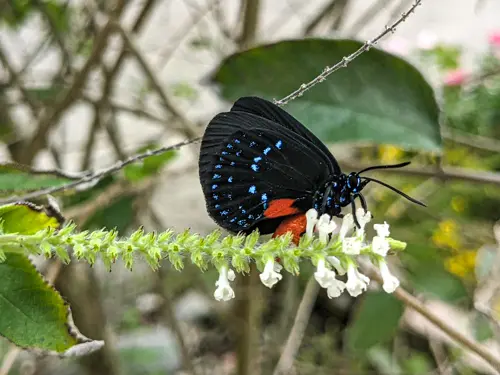
Even if you see butterflies as more of a pest with wings, many of the principles essential to butterfly gardening end up helping out other wildlife in turn. Birds, for which we know Florida is famous, rely heavily on insects as their chief source of nutrition.
If you want birds, bats, and mammals, you need insects, too! Many of the plants utilized by butterflies as host plants are also usable by others for shelter and food.
Planting more natives is a great way to support wildlife of all kinds, and here we discuss several native host and nectar plants that end up nurturing more than just butterflies.
A Quick Word On Monarchs
If you haven’t heard the news, monarchs are back on the endangered list which has stirred lots of interest in helping protect this iconic species.
Monarchs are unique as they are one of the few insects that makes an incredible journey, spanning multiple countries to make it back to their nesting sites. While some aspects of their decline, such as warming temperatures, are outside of our control at the moment, we can still help here in Florida by planting native milkweed and making sure to cut it back in the winter months.
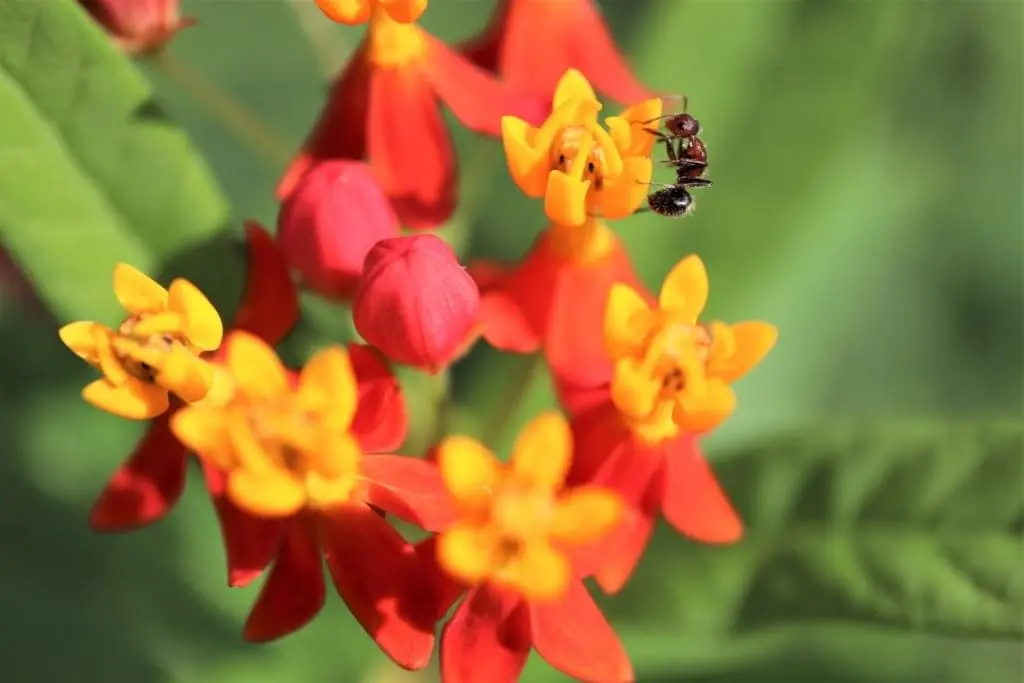
Why native only? Well, tropical milkweed, like the pretty multicolored milkweed you find at most garden centers, does not die back naturally in the winter and there is now plenty of data to support that it doesn’t help the migration efforts of monarchs.
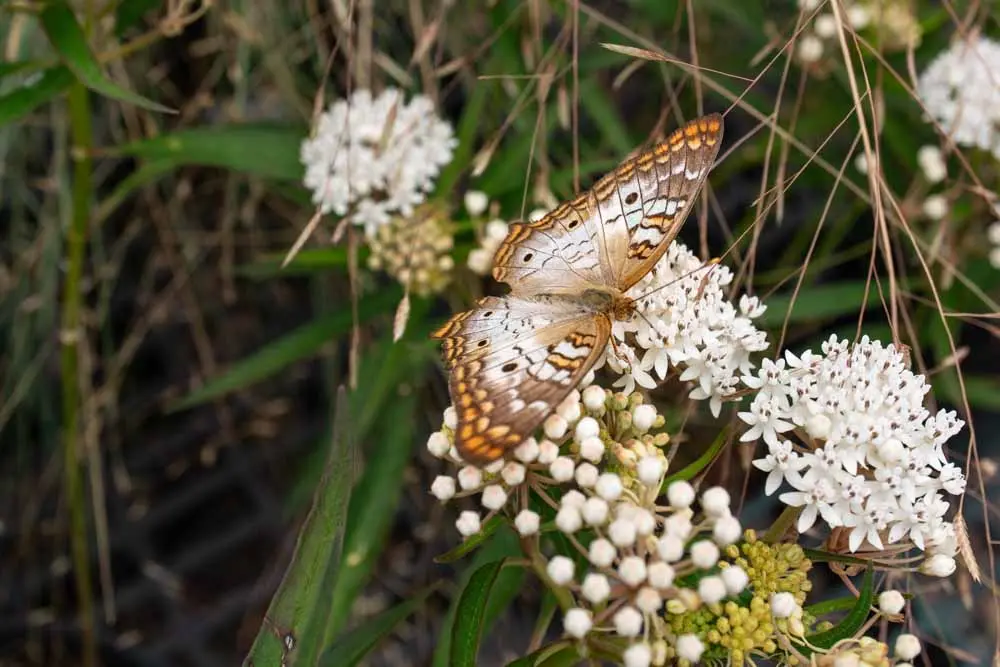
Since tropical milkweed is present year-round, it also serves as a vector for O.E. (Ophryocystis elektroscirrha), a harmful protozoan that persists on milkweed that is not trimmed back. So, as a gardener and lover of monarchs, one of the best things you can do is to only grow native milkweed in your yard. Tropical is okay if you are supporting caterpillars inside, but make sure it doesn’t make it into the ground. For more information, visit the University of Minnesota’s wonderful Monarch Joint Venture, the leading source for the latest research on all things monarch! www.monarchjointventure.org
Now, on to the plants!
Host Plants
If you want butterflies, you need to feature food for both the caterpillars and the adults! Part of the massive success of insects as a group is due to having complete metamorphosis. Having stages of life that eat different food cuts down on competition, meaning everyone prospers, even in a shared space!
To increase the butterfly mileage for your yard, the host plants on this list fit the needs of several species. Since a lot of attention is paid to the flowerbed side of the garden, it’s important to remember to include tree species too,
Oak Trees (Querus Sp.)
It’s hard to find a neighborhood in Florida that doesn’t have at least one live oak nearby.

That’s good news for butterfly fans, as many varieties of hairstreaks and the dustywing use members of this genus as their host plant.
Hickory (Carva sp.)
Hickory trees are not used as frequently as they should be, given their beauty and native roots. If you love big, impressive moths, it might be worth your time to invest in one. Luna moths, IO moths*, and several hairstreaks use this for their host plant.
*IOs also love mulberry AND blueberries, which is the perfect excuse to plant one!
Blueberries, Sparkleberry, and Deerberry (Vaccium sp.)
Planting blueberries and their relatives will bring in a bunch of interesting butterflies, including the red-spotted admiral and banded purple.
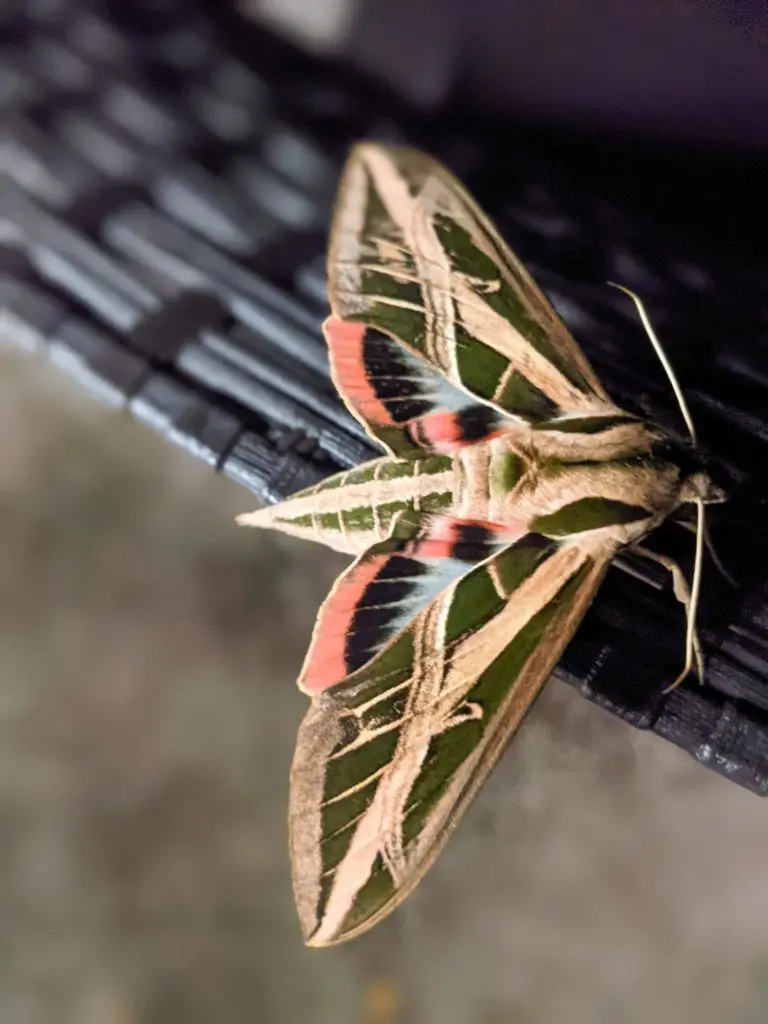
You also will get some moths out of the deal, as blueberries are a favorite of several sphinx moths as well as the infamous I.O.
Cowpea (Vigna sp.)
If you are unfamiliar with this wildlife powerhouse, get on board! Aside from its bad habit of spreading quickly, it does produce a legume that is attractive to wildlife and serves as the host plant for many species of butterflies.

Included in the cowpea host plant club are the Cassius blue, ceraunus blue, gray hairstreak, and the long-tailed skipper.
Native Geranium (Geranium sp.)
While the cultivated geranium struggles through summertime in Florida, our native variation breezes right through. It serves the Tussock moth, the cobbler, and the bilobed looper.
Nectar Plants
Adult butterflies are less picky, and native butterflies are always best. That goes for all of our Florida wildlife. Many of these nectar sources are also food for bees, flies, beetles, bats, and birds, too, making your yard a wildlife oasis.
For the best results to be visual to both us humans and those species we are trying to attract, group by color in groups of 3 or more.
Blue Porterweed (Stachytarpheta jamaicensis)
While the flowers might look less impressive than others, these guys pump out nectar, which is why butterflies are always visiting them. Make sure you buy the native version, since there are cultivated versions floating around.
Fun fact: the flower is edible, if you feel like a snack while out in the garden. It vaguely tastes like mushrooms.
Salvia (Salvia coccinea)
We are lucky to have our own native and beautiful salvias. The red tropical adds a lot of color and texture with ease. It is also frequented by hummingbirds in addition to the usual bee and butterfly crowd.
Button Sage Lantana (Lantana involucrata)
This underappreciated lantana is just as beautiful as its cultivated cousins. It is a butterfly favorite, as it is visually easy for them to see and the umbel inflorescence gives them a place to land.
Hibiscus (Hibiscus sp.)
Hibiscus is a classic for every Florida lawn. Did you know that in addition to the usual cultivars you see at the store, some of them are true Florida natives?
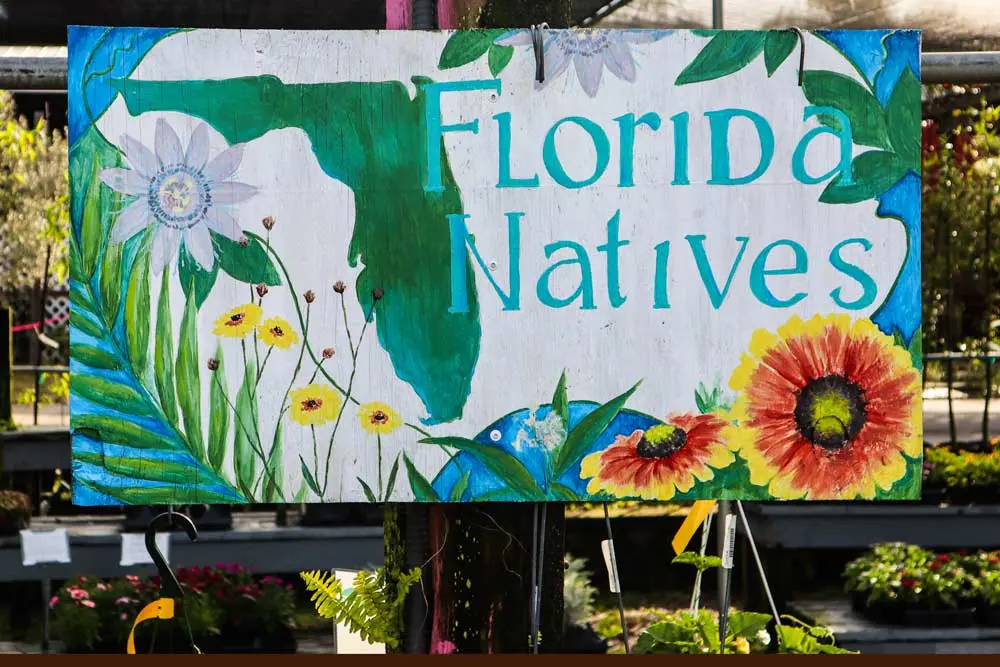
Some of them have dual roles as both host and nectar plants for butterflies. The Swamp Rosemallow, Scarlet Rosemallow, and the Lindenleaf Rosemallow are all worth searching for.
Goldenrod (Solidago sp.)
Goldenrod is always on my personal list and on all butterfly lover lists. The reason is the duration of its nectar production. It’s not unusual for goldenrod to be the last flowering plant standing as winter creeps in. This makes it a great source of nectar and seed for hungry animal visitors.
When planning your butterfly garden, make sure to remember to include both host and nectar plants. Plant native when you can, and in return, you will get a landscape that continues to work for you AND wildlife!


